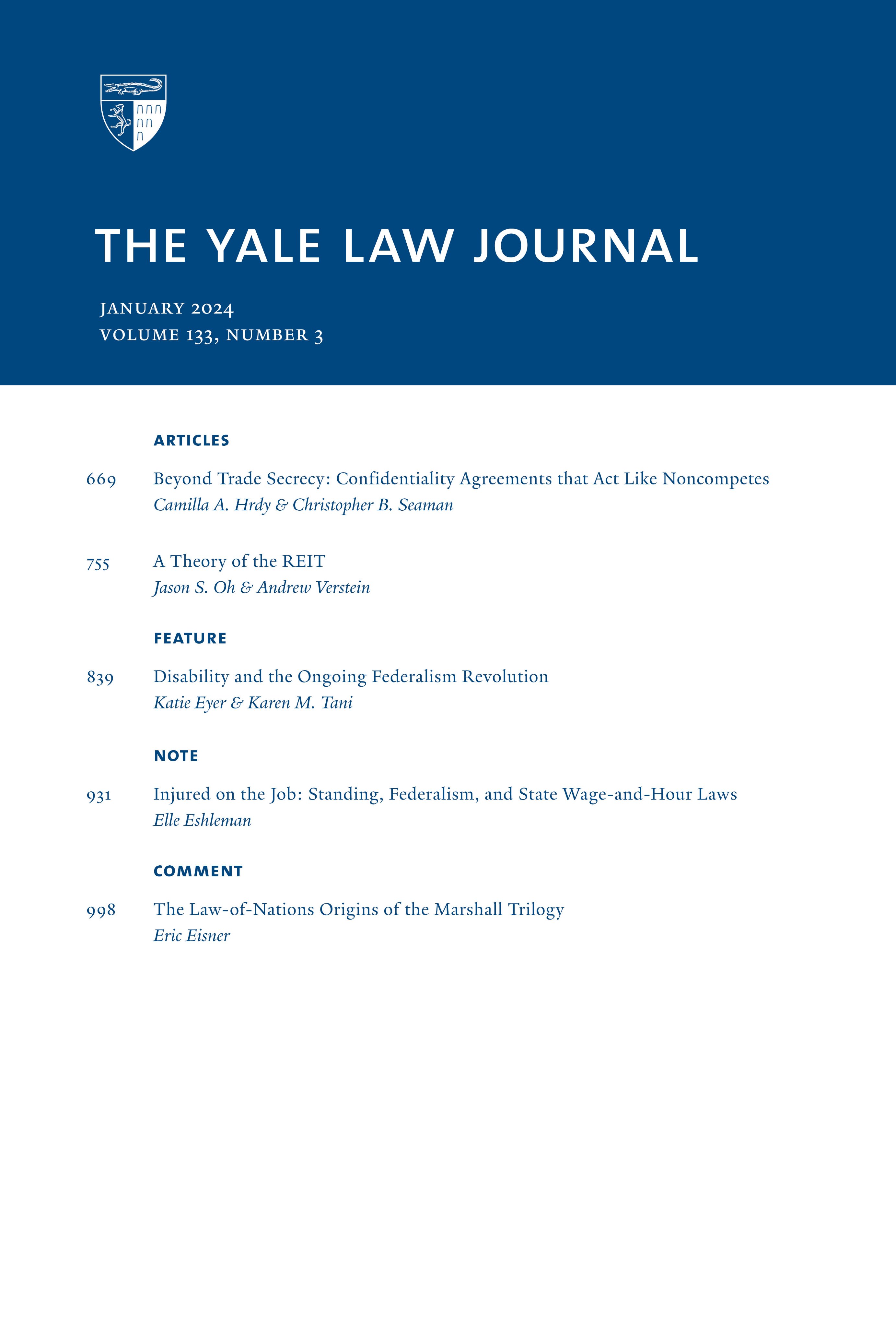《条约的终结:美国国际立法的过去、现在和未来》
IF 5.2
1区 社会学
Q1 LAW
引用次数: 82
摘要
几乎所有通过条约条款达成的国际协议都应该作为国会-行政协议得到国会两院的批准。在这种情况下,本文从经验、比较、历史和政策的角度审视了美国的国际立法。美国的国际立法目前被随意地划分为两种国际立法轨道,一些领域被分配到条约条款路线,另一些领域被分配到国会-行政协议路线,许多领域令人不安地跨越了这两种路线。此外,从跨国的角度来看,美国宪法中概述的国际法制定过程几乎是独一无二的。为了解释美国是如何形成这样一个随意而不寻常的制度的,本文将美国的国际立法历史追溯到建国时期。现在管理的规则和实践模式是为了应对特定的偶然事件而发展起来的,这些事件在很大程度上很少或没有持续的意义。作为公共政策问题,条约条款程序在几乎所有关键方面都明显逊于国会-行政协议程序:易用性、民主合法性和所创建的国际法律承诺的力度。因此,本条的结论是为除少数国际协定外的所有协定绘制了结束条约条款的路线。通过逐步用国会与行政部门达成的事后协议取代大多数第二条条约,政策制定者可以使美国国内与国际法的接触更加明智、有效和民主。本文章由计算机程序翻译,如有差异,请以英文原文为准。
Treaties' End: The Past, Present, and Future of International Lawmaking in the United States
Nearly every international agreement that is made through the Treaty Clause should be approved by both houses of Congress as a congressional-executive agreement instead. In making this case, this Article examines U.S. international lawmaking through empirical, comparative, historical, and policy lenses. U.S. international lawmaking is currently haphazardly carved up between two tracks of international lawmaking, with some areas assigned to the Treaty Clause route, others to the congressional-executive agreement route, and many uncomfortably straddling the two. Moreover, the process for making international law that is outlined in the U.S. Constitution is close to unique in cross-national perspective. To explain how the United States came to have such a haphazard and unusual system, this Article traces the history of U.S. international lawmaking back to the Founding. The rules and patterns of practice that now govern were developed in response to specific contingent events that for the most part have little or no continuing significance. The Treaty Clause process is demonstrably inferior to the congressional-executive agreement process as a matter of public policy on nearly all crucial dimensions: ease of use, democratic legitimacy, and strength of the international legal commitments that are created. Thus, this Article concludes by charting a course toward ending the Treaty Clause for all but a handful of international agreements. By gradually replacing most Article II treaties with ex post congressional-executive agreements, policymakers can make America's domestic engagement with international law more sensible, effective, and democratic.international law more sensible, more effective, and more democratic.
求助全文
通过发布文献求助,成功后即可免费获取论文全文。
去求助
来源期刊

Yale Law Journal
LAW-
CiteScore
4.50
自引率
6.20%
发文量
0
期刊介绍:
The Yale Law Journal Online is the online companion to The Yale Law Journal. It replaces The Pocket Part, which was the first such companion to be published by a leading law review. YLJ Online will continue The Pocket Part"s mission of augmenting the scholarship printed in The Yale Law Journal by providing original Essays, legal commentaries, responses to articles printed in the Journal, podcast and iTunes University recordings of various pieces, and other works by both established and emerging academics and practitioners.
 求助内容:
求助内容: 应助结果提醒方式:
应助结果提醒方式:


